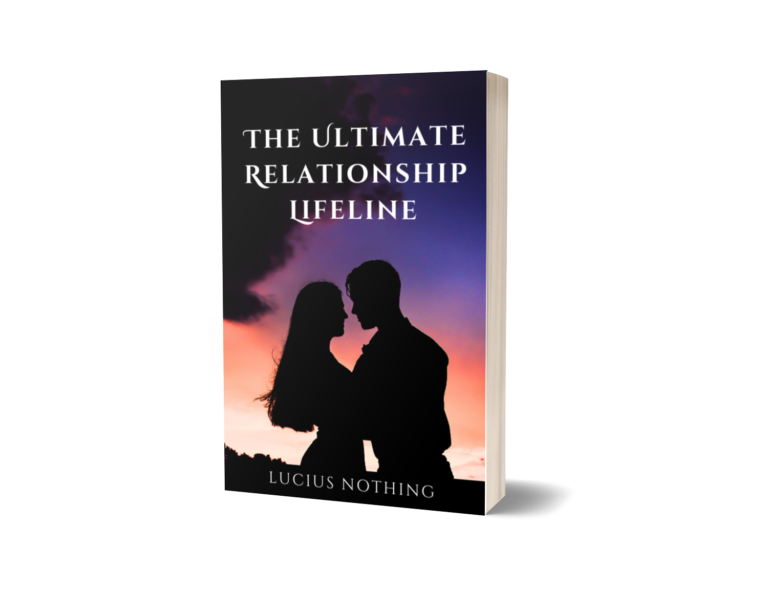Zoroastrianism, like Judaism, Christianity, and Islam, is a “religion of a book” or rather a religion of texts. From the beginning, Zarathushtra’s prophecies were embodied in words, though they were not written down until more than a millennium later. Zoroastrians have three thousand years of words in their heritage.
The Avesta is the analogue of the Bible for Zoroastrians. Like the Bible, it is a collection of many texts from many eras, in different languages. The texts come from times that may be as early as 1700 BC and as late as 400 A.D. Until recently, the Avesta was known in the West as the “Zend-Avesta.” This is a misnomer and was caused by the misinterpretation of the word “Zend.” This means “commentary” in middle Persian (Pazand). The word “Avesta” is mysterious in origin. The German scholars of the late 19th century (Geldner, Bartholomae, etc.) say that it is from the ancient Iranian word upasta meaning “shelter” or “support.” The Avesta scholar Dr. Ali Jafarey has a different idea. He says that it is from the Indo-Iranian word “a” (not) and the root “vid” (know). That is, Avesta means “unknown,” which describes how the language of the Avesta – also known as Avestan – became unknown to the Zoroastrians of later centuries. Jafarey’s interpretation is, as far as I know, original to him.
We must remember that the Avesta as it has come down to the modern Zoroastrian world is but a collection of fragments and texts preserved from a far greater whole. Zoroastrianism, unlike Judaism, has suffered greatly from the destruction of its texts – first, in the conflagration set by Alexander the invader in 330 B.C. which destroyed the library at Persepolis, and later by invading Arabs and Mongols. Zoroastrianism had its Torah, its Talmud, its historical books, and its wisdom literature – and most of it is gone now. What we have is what could be preserved in priests’ memories and in precious manuscripts preserved by brave and devoted Iranians and Parsi emigrants.
After the destruction by Alexander, the holy texts were scattered or forgotten. During the Parthian era, (150 BC-250 AD) a Parthian king, Vologeses, sponsored an attempt to re-construct the Avesta from the scattered manuscripts and from texts gathered from Greeks. In the Sassanian era (250-650 AD) the high priests of the state religion re-gathered the surviving texts of the Avesta into a collection of 21 nasks or “volumes”. The number 21 comes from the number of words in the yatha ahu prayer – an easy number for Zoroastrians to remember. This canon was formulated, interestingly, at about the same time as the fathers of the Christian Church finalized the canon of the Bible.
The 21 Avesta volumes contained writings not only on religious matters but on mythology, law, science, medicine, and history. After the Arab and Mongol conquests, only the writings on religion (containing much of the current Avesta) and one law-book survived, though there is evidence that much of the other material was translated into Arabic and Persian and became part of the Persian Islamic heritage. Though the actual texts may have been lost, perhaps the knowledge and information in them survived.
Join our Facebook group to get the answers to your synastry questions from our experienced community.
I am greatly indebted in this essay to a lecture given by Dr. Ali Jafarey at a conference in 1990, which he illustrated by colorful diagrams. I have no diagrams here so I’ll have to be as descriptive as possible.
The Avesta, the sacred scripture of Zoroastrianism, is like a great pearl, in which layers and layers of material are added around a central core. The central core of the Avesta, and the oldest truly Zoroastrian part, is the Gathas, the five hymns of Zarathushtra.
These Gathas are universally acknowledged to be the actual words of the Prophet. No other Western religion has preserved the words of the founder himself. The Jewish Torah, though called the Books of Moses, is edited from ancient traditions and contains no actual writing of Moses. Jesus’ words are preserved in the Gospels, but he never wrote anything himself. And the Koran was dictated to Mohammed from a heavenly being – not composed by Mohammed. Zarathushtra’s original Gathas form the core text of the Avesta.
They are composed in a language called Gathic Avestan, one of the oldest preserved Indo-European languages. They are rather short, only about 6,000 words, and are in five poetic songs, each in a different meter. Their language is very condensed, often cryptic, and intricately wrought, full of rhetoric, wordplay, sound-effects, and other features of ancient oral-tradition poetry. For these Gathas were composed and preserved for a thousand years or more without being written down. Even after Gathic Avestan was no longer understood, the Gathas were recited by priests in an oral tradition. The meter, the rhetoric, and the ritual language kept the poems amazingly well-preserved, learned by rote over the centuries, until the modern era when Gathic Avestan was finally re-translated.
The Gathas contain the teachings of the Prophet about good and evil, righteousness and truth, social justice and right action. There is very little cosmology or mythology in the Gathas, but there is sublime theology and a resounding statement of belief in the one God, Ahura Mazda, the Wise Lord.
I will be writing an essay specifically about the Gathas, so I will move on to the next layer of the Avesta Pearl. The next youngest text is called the “Worship in Seven Chapters,” or Yasna Haptanhaiti. This text was probably composed by some of Zarathushtra’s contemporaries, only a generation or so after the Prophet. It is in the Gathic dialect, but in a different poetic meter from any of the Gathas. These Seven Chapters have more of the character of “hymns” than the Gathas do – they do not propound teaching or philosophy but are invocations to Ahura Mazda, the Divine Attributes, and the sacred entities guarding earth, sky, and nature. There are prayers for good rule, peace, and health, and statements of devotion to truth and the Prophet’s teachings. The “Seven Chapters” are devotional, not prophetic; liturgical, rather than didactic.
There are a few other prayers scattered through the collection in the Gathic dialect, liturgical in nature. The next major layer of text added onto the core is the liturgical and hymnic collection called the Yasna (“worship”). Actually, the “Yasna” includes the Gathas and the Seven Chapters. The more ancient texts were incorporated into the Yasna, or worship service, so that the core texts would always be recited whenever the great Yasna service was performed. This is why even now, the chapters of the Gathas and the Seven Chapters are referred to by their Yasna number, thus starting with number 28 rather than number 1. (Ali Jafarey has re- numbered the Gathas so that in his reckoning, the Zarathushtrian hymns are simply referred to as Songs 1 through 17.)
These Yasna texts are a “running commentary” as Jafarey puts it, on the worship service being done, and they contain many praises for various entities, not only the souls of the departed but the re-introduced god-forms of the Indo-Iranian pantheon, who are the yazatas or adored spirits of later Zoroastrian practice. The whole Yasna has 72 chapters. This number, in time, became a holy number and the kushti, or sacred cincture worn by observant Zoroastrians has 72 interwoven strands to remind the wearer of the holy writing and service.
The Yasna is composed in a dialect of Avestan called “Younger Avestan,” in which many of the ancient Gathic words and usages have changed. But it is still recognizably the language of ancient Iran. In the next layer, also in Younger Avestan, is a set of priestly texts called the Visparad; it contains invocations to the Wise Lord, praise-texts and homage to the Prophet, the Divine Attributes, the yazatas, and the Gathas themselves with their holy words. The Visparad also contains liturgical instructions.
The next major Younger Avestan text is a series of praise- hymns called the “Yashts,” or “Worships.” These are adapted from pre-Zarathushtrian hymns to the various Indo-Iranian deities, just as the deities themselves were re-adapted as yazatas under the new, monotheistic faith. There are 21 of these Yashts, along with a few other fragments. There is a Yasht devoted to Ormazd (later name of Ahura Mazda), Asha Vahishta, the divine Truth, Sraosha, the divine embodiment of Obedience and Hearing, and Daena Yasht, which praises Holy Wisdom. There are also Yashts devoted to Mah, the spirit of the Moon, Tir, the spirit of the star Sirius, and Aban, the Waters, which features re-cycled hymns to the river goddess Ardvi Sura Anahita. And there is a great hymn to Mithra, the Mihr Yasht, which is devoted to the brilliant god-form of sunlight, right contracts, and friendship.
As Z. scholar Mary Boyce has pointed out, much of the texts of the epic and mythological hymns to the yazatas come from the old Indo-Iranian religion and are thus older than the Gathas. The Yashts, as prayers to god-forms, mention sacrifices and libations and the rituals of the old religion. They are the textual sign of the re- introduction of the older forms into Zoroastrian religion, thus, in some views, compromising the rigorous abstraction of the Prophet’s original vision. This is not necessarily a bad thing, as long as the proper perspective and hierarchy of divine beings is maintained. If Ahura Mazda is worshipped as the one and only God, then the yazatas of Zoroastrianism are no more a compromise than the saints and angels of Catholic and Orthodox Christianity. (If you are a Protestant, that indeed may be too much of a compromise for you.)
However the Yashts are viewed, they contain some of the most vivid and beautiful language of the Avesta. The ancient hymns are filled with evocative images from the Iranian past. I will quote some passages from the Mihr Yasht, to Mithra. The sacrifice mentioned here, by the way, is not a real sacrifice but one of prayers:
“We sacrifice unto Mithra, the lord of wide pastures, who is truth-speaking, a chief in assemblies, with a thousand ears, well- shapen, with ten thousand eyes, high with full knowledge, strong, sleepless, and ever awake… who first of the heavenly gods reaches over Hara (Mount Elborz), before the undying, swift-horsed sun, who foremost in a golden array takes hold of the beautiful summits, and from thence looks over the abode of the Aryans with a beneficent eye… where the valiant chiefs draw up their many troops in array, where the high mountains, rich in pastures and waters, yield plenty to the cattle…with his arms lifted up towards immortality, Mithra, the lord of wide pastures, drives forward from the shining Garo-nmana (heaven) in a beautiful chariot that drives on, ever-swift, adorned with all sorts of ornaments, and made of gold. Four stallions draw that chariot, all of the same white color, living on heavenly food and undying…” (Darmesteter translation)
This imagery is not meant to be taken literally, although perhaps it was in pre-Zarathushtrian times – it is meant to convey the grandeur of the god of light who sees all and watches over human relationships.
There is a long Yasht which is not devoted to a god-form or an Attribute, and that is the Farvardin Yasht, which is the Zoroastrian commemoration of souls. This contains mythological images relating to the Fravashis, the divine souls of faithful people. The Fravashis are here conceived of as heavenly warriors against evil, each one an individual assigned to, or belonging to, one human, or even divine being. The Farvardin Yasht contains praises for the Fravashis of great Zoroastrians of the past, including Zarathushtra and his family, and his early followers. There are long lists of names of past worthies – Zoroastrian saints – which are commemorated in this “litany of the saints.”
Each Yasht contains some introductory prayers in Pazand, a dialect of Middle Persian, added at a later date. These poems are still in use in Zoroastrian worship, although worshippers understand them only in translation.
Other prayers in Younger Avestan, accompanying the Yashts, are the Nyayeshes. Each Nyayesh is a short prayer, not as grand or epic as a Yasht, in praise of a natural object or abstract quality. The most famous, and perhaps the most used of the Nyayeshes is the Atash Nyayesh, the Hymn to Fire, from which I quoted in my essay on the Sacred Fire.
The Yashts are hard to place in Zoroastrian history – scholars disagree greatly as to when these poems were created, or re-created. Although the mythic language is very ancient, the re- editing went on much later, and some scholars have suggested that the Yashts were composed during the Achaemenid period, from 600-330 BC.
The latest book of the Avesta is a book of mythological material, priestly instructions, and purity laws called the Vendidad. This name is from “Vi-daevo-dato” or “Law against demons.” To our modern sensibilities, the Vendidad is a very weird text. It is a mixture of later Zoroastrian mythology, full of strange imaginings, and extreme purity laws, reminiscent of the Hebrew laws in Leviticus and Numbers. There are also civil laws, also extreme to our modern eyes, which deal with everything from violence and sexual transgressions to abuse of animals and people. There are also detailed instructions on what to do with corpses and refuse, and how to isolate women during their menses. Also in the Vendidad are elaborate rituals of priestly purification, and instructions on making and keeping sacred fires.
The laws of the Vendidad, ancient as they are, are still influential in traditionalist Zoroastrian communities, especially rural ones. But in more modern Z. circles, the Vendidad has become scorned and most liberal Zoroastrians ignore it completely as a relic of an old and primitive past. (I will be writing an essay on this book at a later date.)
The Vendidad is composed in a form of Avestan which scholars consider “academic” or even “corrupt.” Many commentators remark that it seems as if the compiler and writer of the Vendidad knew Avestan only as a priestly language, not as a spoken language. This may indeed be true. The date of the Vendidad has been placed as late as 400 AD, in the Sassanian Empire, though the material contained in it is far older.
The rest of the Avesta consists of texts and fragments relating to priestly functions and liturgies – since the texts were preserved by priests, they were most likely to preserve texts concerning themselves and their work. Much later in Zoroastrian history, volumes of excerpts from the Avesta came into use among Zoroastrians. A hymnbook such as this is called the “Khordeh Avesta” or “little Avesta” and is still the main prayerbook among Zoroastrians. The contents of each Khordeh Avesta edition vary, but the book usually contains the basic Avestan prayers such as the yatha ahu and ashem vohu, some of the Nyayeshes to fire, water, etc. and some of the Yashts to the various yazatas. The Gathas, surprisingly, are not often excerpted in the books. There may also be explanations and pious texts in a modern language such as Persian or Gujarati – sometimes even English.
Zoroastrianism has always depended on words, and literacy is a sacred duty for a Zoroastrian. Though very very few Zoroastrians know Avestan, all of them revere the Avestan language and say their prayers in it, relying on transliterations to read it aloud, and translations for their own understanding. Zoroastrians know that Avestan, even if they do not understand it, carries more than just text and information. It has gathered a wealth of spiritual power over three and a half thousand years, an intangible but very perceptible grandeur. It simply would not be the same if all the prayers were translated into Gujarati, Persian, or English – though often, at modern ceremonies, translations are read after the ceremony is concluded. The Avesta has been preserved through millennia of hardship by the devotion of priests and people who kept it alive in memory, sacred words preserved in linguistic amber until the modern era when their code was cracked. This preservation of the original words of Zarathushtra, and the words of those who came after him, is perhaps the foremost miracle of the entire Zoroastrian tradition.
Hannah M.G. Shapero
Ushtavaiti
Truly understanding AVESTA - The Scriptures of Zoroastrianism could mean the difference between great happiness and misery down the line. Find a psychic medium near you today, whether you’re in New York City, Chicago, Utah, Seattle in the US, or somewhere completely different, you can get the expert guidance you deserve. Don’t forget you can also get a psychic email reading at low cost, or try the best online psychic reading sites such as Kasamba, Oranum, PsychicOz, Bitwine, Everclear Psychic and more.



